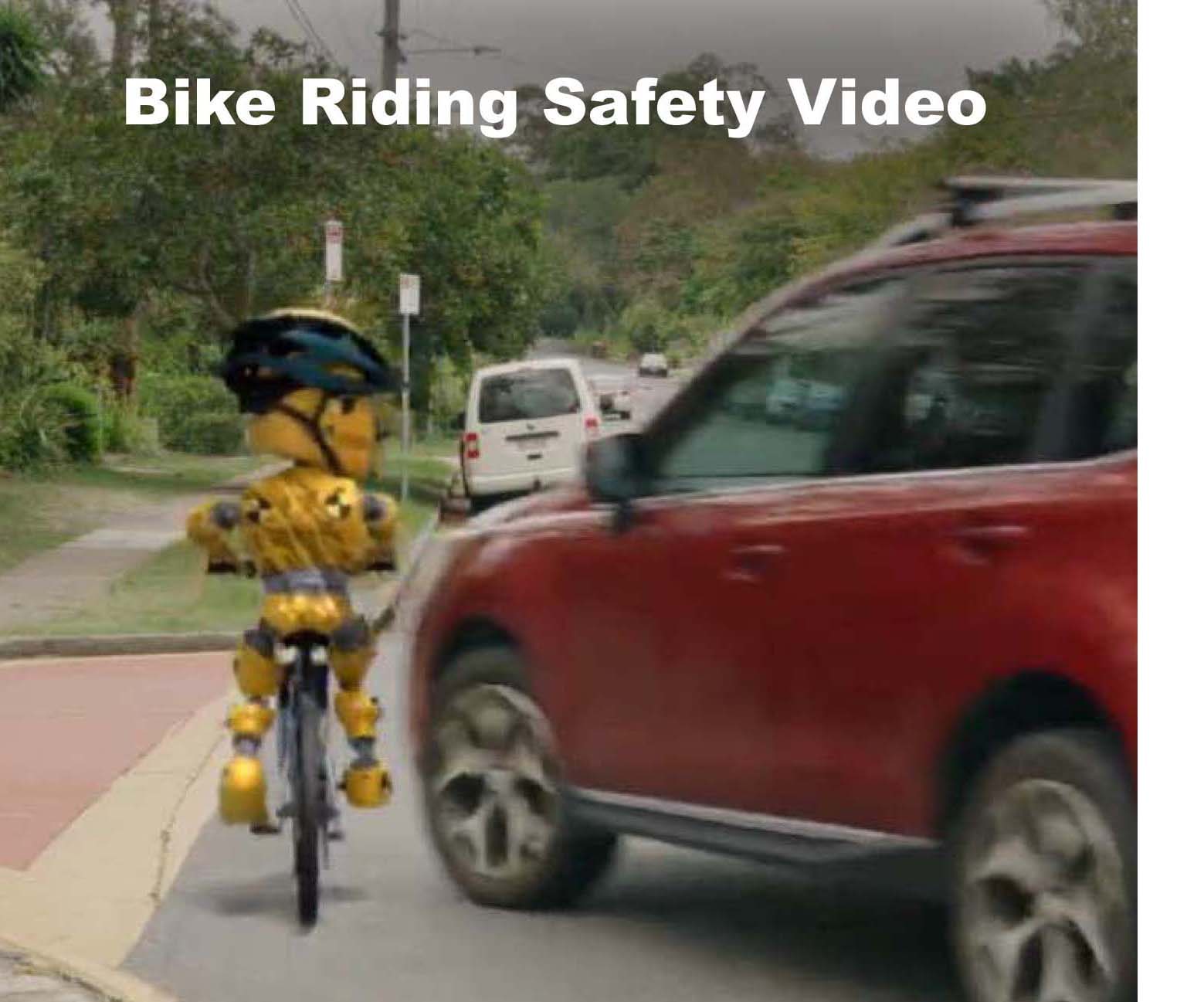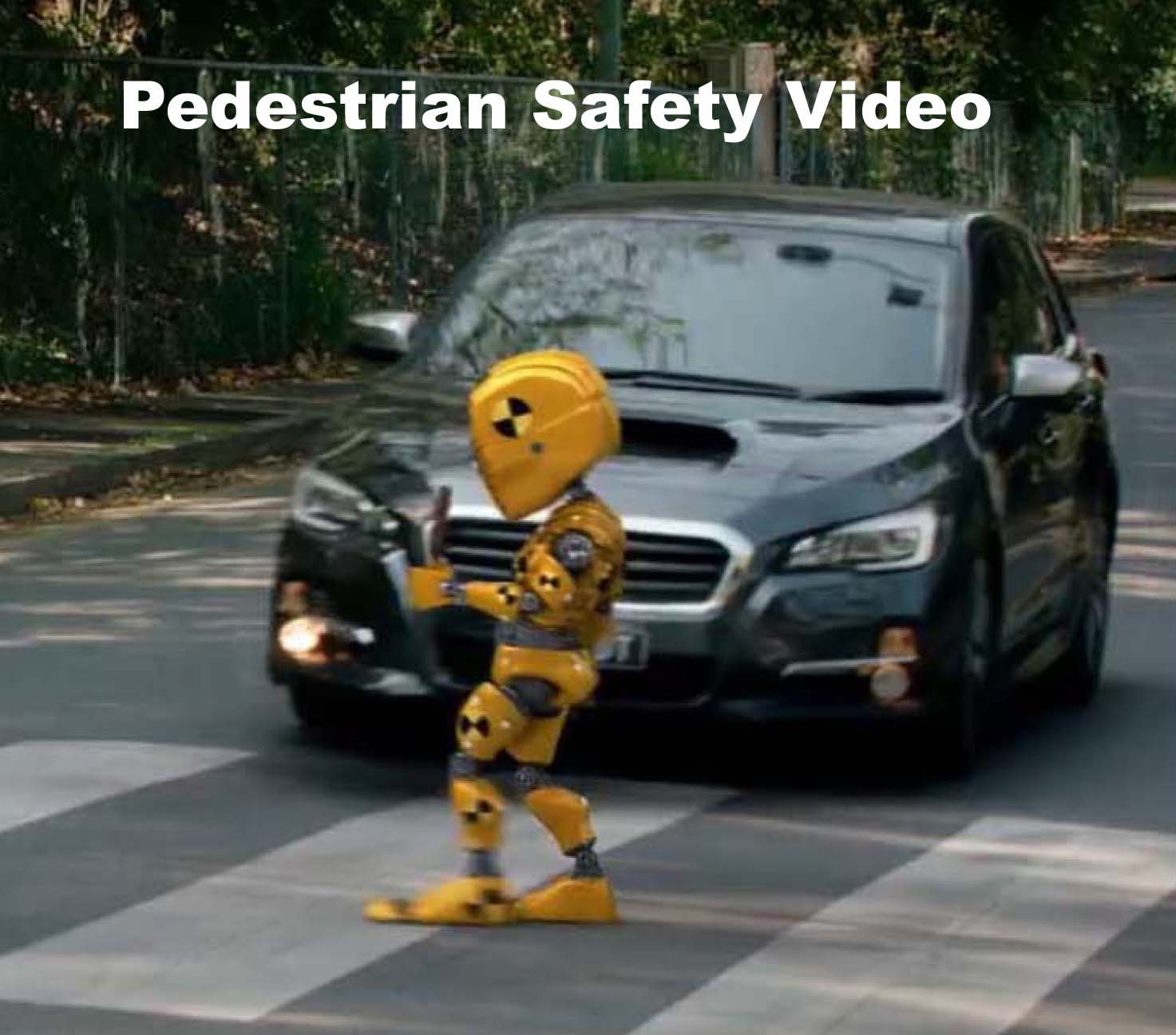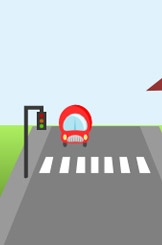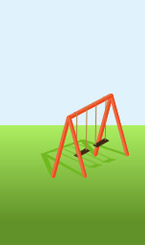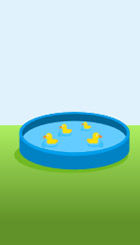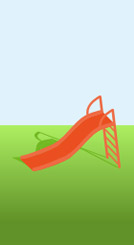Road Safety
New Kidsafe Bike and Pedestrian Safety Videos
Two new Safety Ninja videos have been produced by Kidsafe to promote safety for our kids when riding their bikes and when they are a pedestrian.
Bike Safety video: https://youtu.be/tt_spSqdKwA
Pedestrian Safety video: https://youtu.be/UuRvXp6Taq4
Safety of Children in Motor Vehicles
- National Best Practice Guidelines launch 30 March 2021

Click here to read media release.
The aim of these guidelines is to provide parents, carers, and road safety practitioners with clear advice on optimal use of child restraints and seat belts by children aged 0-16 years when travelling in motor vehicles, to minimise their risk of injury in the event of a crash.
These guidelines were developed through a partnership between Kidsafe Australia and Neuroscience Research Australia, supported by a panel of child road safety experts. They were approved by the National Health and Medical Council of Australia in November 2020. Click here to download the guidelines.
For full details and resources available on the safety of children in motor vehicles - on the Kidsafe Australia website, click on this link.
The laws in all Australian states and territories outline the minimum child car restraint requirements for all children up to the age of 16 years. The available evidence shows that there is more that can be done above and beyond these minimum requirements, to minimise injury to child passengers, by encouraging best practice child restraint use.
To see the Top Ten Steps for Safer Travel identified in these guidelines, click on this link.
The new recommendations outlined in the Guidelines include:
- Children should use their child restraint or booster seat when travelling in rideshares (e.g.Uber) and rental cars, as well as taxis.
- Strengthened advice to use the ‘5 Step Test’ to decide when to transition from a booster seat to adult seat belt.
- Children should be encouraged to sit in an upright seating posture so their restraint can work optimally.
- Children aged 4-8 years should use an add-on booster seat in preference to an integrated booster, but children 9 years and older can safely use an integrated booster seat if their car has a side curtain airbag where they are sitting.
- Parents of low birthweight babies should use an infant car restraint designed for low birthweight babies until they can get good harness fit in a ‘standard’ child car restraint.
5 Step test - child using adult seat belt in back seat of car:
Does your child meet the 5 step test when sitting in the back seat of the car using an adult seat belt?
- Sash belt sits across the middle of the shoulder
- Correct posture - child can sit with their back against the seat
- Lap belt sits across the hip bone - not near the stomach area
- Knees are bent over the edge of the seat
- The child can sit upright the whole car ride without slumping down
For more info. click. https://kidsafe.com.au/…/…/Restraint-guidelines-brochure.pdf
Road Safety - important things for you to know:
Motor vehicles accidents are one of the most common causes of transport related injury for children. Whenever children are passengers in a vehicle they should be seated in the most appropriate child restraint for their age and size. To provide the best protection for your child in a motor vehicle, follow these simple steps:
- Buckle up Every Child on Every Trip. Always choose, correctly fit and use the restraint most appropriate for your child’s age and size.
- Use a restraint which has been approved to the Australian Standards AS/NZS 1754 for child car restraints.
- Prior to 2011, restraints complying with AS/NZS 1754 use weight limits as guides for use.
- From 2011 onward, restraints will start to use height as the guide for usage—they will have height markers on them with direction for correct usage.
- Always follow the manufacturer’s instructions for the child car restraint you are using.
- Second hand restraints should be used with caution. You should be aware of the history of the restraint and be sure that the restraint has all the appropriate fittings. Any restraint that is more than 10 years old should not be used.
- Children are safest when travelling in the back row/rows of seats in the vehicle.
- Do not move your child to the next restraint until they have outgrown it. Ensure your child has exceeded the maximum size limits of the restraints available for their age group before choosing to progress to the next stage of restraint.
Click here for full Child Restraint details and Law in Tasmania
Road Safety Fact Sheets
Car Restraint Fact Sheet (PDF)
Driveway Runovers Fact Sheet (PDF)
Hot Cars Fact Sheet (PDF)
Kids on Wheels Fact Sheet (PDF)
Driveway Safety
Tragically one child is accidentally run over in their own driveway every week in Australia.
Four Wheel Drive vehicles are not the only vehicle involved, with many popular family sedans also having extensive blind spots. For a copy of the Reversing Visibility Index Tables to see how your vehicle rates visit www.sgio.com.au/reversing
Why are children at risk in the Driveway:
- Young children are naturally inquisitive and want to see what is going on. They move surprisingly fast and can run into the path of a moving vehicle without warning.
- In the time it takes for the driver to say goodbye and start the car, a child can move from a ‘safe’ position onto the driveway and into the path of the vehicle.
- Small children, particularly toddlers, can be impossible to see from inside a car, especially if they are directly behind it.
- Most drivers are aware of their car’s ‘blind spots’ however the rear vision of a number of popular cars has been tested and results show that there is in fact a large ‘blind space’ behind most cars, particularly when reversing.
- Even if your car has parking sensors or a video camera fitted, you may not notice a small child until it is too late to stop.
Safety Steps to prevent driveway run overs:
- Always supervise your children and do not let them play around cars. When near cars hold their hand or hold them close to keep them safe.
- Don’t let your children use the driveway as a play area; create safe play areas for your children.
- If you are the only adult at home and need to move a vehicle, even only a small distance, place your child securely in the vehicle with you while you move it.
- Make access to the driveway from the house difficult for young children, by using security doors, fencing or gates.
- Drivers should walk around their vehicle before moving it, especially where children may have been.
- Children learn mostly by observation and imitation. Examples set by parents can have effects on their behaviour.
- The SDERA Smart Steps program recommends having a Safety Spot where children are to always stand with a parent/guardian when cars are moving.
Bicycles and Other Devices
Most cycling injuries don’t involve another vehicle, but occur when children fall off their bike after crashing into a pole, curb or fence. Head injuries are the main cause of death and disability to cyclists. Bike helmets help reduce injury.
Every child needs a helmet even if you are not riding on the road or they are being supervised by an adult (All helmets should meet AS/NZS 2063)
Helmets
To be effective a helmet has to be well fitting and has to be used! Helmets should be worn when cycling, skateboarding, rollerblading, roller skating and using micro-scooters.
Helmet Fit
- Measure the child’s head before purchasing in order to select the correct size.
- The helmet should fit firmly on the head with the chinstrap securely fastened.
- Do the push test once fastened. If the helmet can be pushed back and forwards then it won’t protect the front or the back of the head in a fall. The helmet is too big.
The Bike
Make sure the bike fits: A bike that is too big or small is a safety hazard. How to check: have your child sit on his/her bike; at least the toes should touch the ground on both sides.
Do equipment spot checks: Parents should ensure their child’s bicycle is equipped with safety devices such as lights (AS3562), reflectors (AS2142) and a bell or horn. Helmets should be approved for safety with an Australian Standards (AS2063) certification.
Be a role model: Set a good example when cycling with your children and wear a helmet too - it is required by law!
Make bikes Safer: Buy safe bicycles, with spoke guards & chain guards; Ensure a bike lamp is used at dusk or at night; Fit safety devices to bicycles such as reflectors and safety flags.
Tips for Safe Cycling
- Ensure Supervised Riding: Children under age ten should cycle with responsible adults. Most children in that age group do not have the skills to cycle safely without supervision & on road.
- Learn the rules of the Road: Make sure children are taught the rules of the road for safe cycling practices before they are allowed to ride by themselves.
- Know the dangers of the driveway: Children should know the driveway is dangerous and can pose a safety risk. They should always stop before entering the road, scan by looking in all directions, listen & think about if it is safe to cross the road. Do not encourage children to ride their bikes in the driveway.
- Wear bright coloured clothing: Cyclists should wear bright coloured clothing or use a visibility vest so they stand out and are easy to see.
- For young cyclists, a footpath or shared path is the best place to cycle, unless a no bicycles sign is on display. The Road Traffic code 2000 allows children under 12 to ride on footpaths, but remember that driveways are dangerous
- Children should avoid riding on busy streets and riding at night
- Help children understand when it is safe to cross the road
- Teach children to walk their bikes when crossing the street, crosswalk or railway crossings
Riding with Children as Passengers
Kids’ bike seats and trailers that attach to a parent’s bike provide easy transportation of young children, while parents enjoy all the benefits of riding.
When is my child ready?
Your child’s neck and back must be strong enough to support their head and the extra weight of a helmet while riding. They must also be able to cope with the additional forces experienced when speeding up, slowing down and bouncing over bumps or potholes. Kidsafe WA recommends against taking a child under 12 months on a bike or in a bike trailer.
By law, your child must wear a properly fitted helmet when on a bike seat or in a trailer. In the event of a crash, the helmet protects your child’s head from impact with the ground and the bike, bike seat or trailer frame. The helmet must not force the child into an uncomfortable position. If the helmet forces the child’s head forward, they may be too young.
Some safety rules
- Ensure the seat or trailer is securely fixed to the bike before putting the child in the seat. If you are not sure, get a bike shop to install the carrier.
- Make sure the bike is stable before putting the child in, or taking them out of, a rear or front mounted seat.
- Never leave a child unattended in a bicycle-mounted child seat.
- Make sure the child wears a properly fitting helmet and harness at all times.
- Ride conservatively to take account of the longer braking distances and reduced manoeuvrability due to the extra weight.
- Make sure you have full control of the bike and child before riding in public areas. Test ride before you take the bike into busy areas.
- Don’t use a baby backpack or sling while riding your bike. These make you less stable and, if you crash, the child has much further to fall and you might fall on them.
- Always look for Bike seats, carriers and helmets that carry an Australian Standard.
Skateboards, Inline Skates, Roller Skates & Micro-scooters
Falls are the most common cause of injuries so far with these products, although there have been reports of injuries resulting from collisions with other people and objects. Most falls are the result of simple loss of control.
Identify safe and legal venues, which may be on private property, or venues specifically set aside for skating. Check with the local council for skate parks in the area.
A roller drome offers a smooth scoot ride away from roads. Check with your local roller drome or Skate Centre to find out if they offer lessons. Learning how to fall safely is critical in reducing the risk of injury.
Safety is Simple
- Avoid poorly made products
- Purchase and use protective equipment, helmet and wrist, elbow and knee guards.
- Learn to ride and practice in a safe place such as a dual footpath away from roads, driveways and slopes.
- Use in a safe manner-pedestrians have right of way so keep left and give way
Hot Cars
Leaving children unattended in the car, even for a short time, can be FATAL. NEVER leave children unattended in the car.
Children do not tolerate heat as well as adults because their bodies generate more heat relative to their size than an adult. Children also lose more fluids as they have a greater proportion of skin surface in relation to their size.
On a typical Australian summer day, the temperature inside a parked car can be as much as 20° to 30° higher than the outside temperature, i.e. on a 30°day, the temperature inside the car could be as high as 60°. 75% of the temperature rise occurs within 5 minutes of closing the car and leaving it.
Young children are at risk of dehydration, heatstroke, hyperthermia, and asphyxia; which can all lead to death.
Safety Steps:
- If you have to leave the car, even to run a quick errand; take the children with you.
- Do not use the car as a ‘baby-sitter’ substitute.
Safety when travelling in hot weather:
- Provide plenty of cool fluids, preferably water, for all occupants and offer them to children regularly.
- Dress children suitably to promote airflow around their bodies i.e. if the car does not have air conditioning, dress the children in clothing made of lightweight fabric and light in colour.
- Double check that the harness fits the child – in summer time with children wearing lightweight clothing, restraints and arnesses may need to be tightened.
- For rear facing restraints, do not use a hood to protect the baby from the sun. This will decrease airflow around the baby’s head. Instead use a visor or sunshade to filter the sun’s rays.
- Make frequent stops, at least every 2 hours, so that all occupants can get out of the car for exercise.
- This includes removing the baby from the capsule or restraint, and allowing the baby to roll around on a rug on the ground.
- When getting back into the car, recheck the fit of the children’s harnesses.
- Plan car journeys for the cooler hours of the day.
- Cool your car down as much as possible before putting the child in the car.
- Where possible, when stopping or parking your car, put it undercover or in the shade to reduce the amount of the direct sunlight hitting your car.
Pedestrian Safety
Walking is an important part of children’s lives. It is important for their health and fitness, and their ability to get around their neighbourhood and community independently.
Being a pedestrian can be a risky business, especially for children in busy cities. Roads are designed with adults in mind, but children are not ‘little adults’. They are less well developed physically, cognitively and in terms of their traffic experience.
Here are some guidelines to help keep children safe as pedestrians at different ages:
Up to 5 years old
- Separate play areas from cars. If possible, fence your child’s play area off from driveways and the street. If this is not possible, help children choose safe places to play away from cars and driveways, and supervise them closely
- Always walk right around your car before backing out. Have everyone else using your drive do the same.
In traffic situations
- Always be with your child. They are too young to cope alone.
- Hold your child’s hand when you are near traffic
- Set a good example for them to copy. Explain what you are doing when you cross the road together. Begin teaching them to “STOP, LOOK, LISTEN and THINK” (see From 5-9 years).
- Make sure they get in and out of cars on the kerb side.
- Ask your preschool if they teach road safety and what safety measures are in place.
From 5 to 9 years
- Supervise your child at all times near traffic, particularly when crossing roads.
- Teach your child how to cross roads safely. Children must first stop at the kerb. Then they need to look and listen for traffic, and then decide whether it is safe to cross. (“STOP, LOOK, LISTEN and THINK”)
- Make the trip to school together along the safest footpaths and use safe crossing places as an example for your child to follow.
- If you are unable to be there, arrange for your child to be supervised on the way to and from school and during after school activities. Ask if your school has a walking school bus program.
- Explain words like “fast”, “slow”, “near” and “far”. Talk about signs and traffic lights and the safe places to cross. Point out dangerous places and where not to cross – near curves and where things might hide children from view.
- If you are picking children up from school, have a safe meeting place, then cross the street with them. Never call them over from the opposite side of the street.
- Continue to make sure children get in and out of cars on the kerb side.
- Ask at your child’s school what traffic safety programmes are taught.
The ‘Elmo Stays Safe’ campaign, developed by Sesame Workshop (the non-profit organisation behind Sesame Street) and Kidsafe with the support of the TAC, RACV and Holden, was designed to prevent child motor vehicle and pedestrian injuries and deaths in Australia.
As part of the campaign, a range of resources were developed to reinforce key messages to children and their families on how to be safe on the roads and in motor vehicles. You can download these resources for free below!
'Elmo Stays Safe' Storybook (37Mb pdf)
'Elmo Stays Safe' Activity cards (23Mb pdf)
Elmo Stays Safe' Activity Poster (9Mb pdf)
'Elmo Stays Safe' Message Poster (605Kb pdf)
Colouring Page_Playground (3.7Mb pdf)
Colouring Page_Street scene (5.2Mb pdf)
Staying Safe activity card (2.1Mb pdf)
For 2016 National Kidsafe Day, Ice Age Road Safety resources were developed and are available through the links below
Kidsafe, in conjunction with Ice Age Collision Course, have developed some exciting road safety resources. This is due to generous support from 20th Century Fox.
All of the resources featuring Scrat and the Ice Age herd can be downloaded for your community. Thanks again to Scrat and the herd, and thank you for accessing these resources and working together to make a safer world for kids!
Posters - click on links
National Kidsafe Day 2016, Ice Age and Stop, Look, Listen, Think!
National Kidsafe Day 2016, Ice Age and Wear a Helmet!
Road Safety Information Sheets - click on links
National Kidsafe Day 2016, Ice Age and Safe Cross Code
National Kidsafe Day 2016, Ice Age and Safe Travelling
National Kidsafe Day 2016, Ice Age and Seatbelt Safety
National Kidsafe Day 2016, Ice Age and Wear a Helmet
NKD 2016 Proudly Supported by ICE AGE COLLISION COURSE
TM & © Twentieth Century Fox Film Corporation. All Rights Reserved.
© 2016 Twentieth Century Fox Home Entertainment LLC. All Rights Reserved. TWENTIETH CENTURY FOX, FOX and associated logos are trademarks of the Twentieth Century Fox Film Corporation and its related entities.

